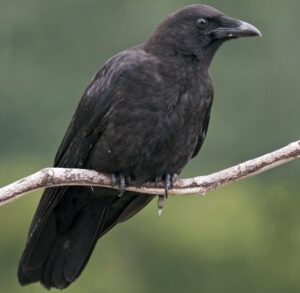
Figure 1: This is the flag of Angola, the model country in the research study discussed
Source: Wikimedia Commons
Researchers often discuss the economic and political impacts of civil war, and for good reason. From an economic perspective, countries undergoing civil wars see immediate spikes in labor and transport costs, causing GDP and trade to both fall dramatically. In the long run, civil war also leads to displacement of refugees, which can result in destabilization of not just the war-torn country but the country’s entire region as well due to the associated costs of mass human migration. GDP, trade, and stability can take years to recover1. On the other hand, post-war, countries may experience periods of strong political development and economic growth as insurgence groups in power often make transitions into creating strong central leadership systems and locals become more politically active2. In either circumstance, the long-standing impacts of civil war cannot be understated and are rightly the focus of research.
One area often ignored by researchers is the effect of civil war on the environment of the country(s) in question. A team of researchers from the UK’s University of East Anglia, Brazil’s Federal University of Paraíba, and Angola’s University of Agostinho Neto tackled the enormous task of understanding the impacts of civil war on a nation’s wildlife populations. They used local ecological data from Angola, a nation in Southwest Africa, to assess the effects of civil war on savannah and forest mammals. Angola was used for this case-study because it contains over 275 species of mammals, many of which were specifically targeted and hunted prior to, during, and after Angola’s civil war from 1975 to 2002. The team specifically chose 26 wild mammal species found in Quiçama National Park and Quiçama Game Reserve (Angola’s main protected area) to study. They found that after the war was complete in 2002, 20 of the 26 species studied had at least 77% lower population numbers than they had in 1975 when the war had started. Perhaps more significantly, by the end of the post-war period in 2017, numbers remained critically low3.
The team found that the answer to their questions about civil war and wildlife were extremely nuanced. In general, the team found that several of the changes to wildlife occurred due to indirect changes caused by war – including political and socio-economic changes – rather than just from direct effects of the conflict. Direct impacts during the war included things like overhunting of large mammal species from soldiers and pauses on anti-poaching patrols – which certainly had significant impacts on population declines. Post-war periods, new settlements of refugees, and lack of wildlife regulation due to continued political tensions prolong the sharp declines mammal populations face during war times. The team did find that certain effects of war, including declines in oil and mining industries and lack of human settlements in demilitarized zones, can promote wildlife population growth and increases in diversity. Unfortunately, these positive impacts cannot offset the decimation that wildlife populations see both during and after civil wars3.
This study has significant impacts for the future of international politics regarding wartime and post-wartime policy. Professor Carlos Peres, researcher from the School of Environmental Sciences at University of East Anglia and co-author of this study, stated that even during peacetime, developing countries struggle to maintain and protect their wildlife. Despite this, there are still no good mechanisms in place to support countries in maintaining baseline wildlife population levels4. Potential mechanisms could include deployment of peaceful forces during wartime whose goal is to protect the environment of war-torn countries. Of course, this solution comes with its own set of massive complications – the lives of these environmental protectors would be at great risk. Hopefully, with these findings in mind, researchers are able to work in tandem with policy makers to protect the environment of vulnerable nations.
References
Mueller, H., & Tobias, J. (2016, December 13). The economic effects of civil war often last well beyond the conflict period and can spill over to other countries. https://www.theigc.org/reader/the-cost-of-violence-estimating-the-economic-impact-of-conflict/the-economic-effects-of-civil-war-often-last-well-beyond-the-conflict-period-and-can-spill-over-to-other-countries/.
Kelmendi, P., & Rizkallah, A. (2018). The Effects of Civil War on Post-War Political Development. In P. Kelmendi & A. Rizkallah, Oxford Research Encyclopedia of Politics. Oxford University Press. DOI: https://doi.org/10.1093/acrefore/9780190228637.013.542
Braga-Pereira, F., Peres, C. A., Campos-Silva, J. V., Santos, C. V., Alves, R. R. N. (2020). Warfare induced mammal population declines in Southwestern Africa are mediated by species life history, habitat type and hunter preferences. Scientific Reports. DOI: 10.1038/s41598-020-71501-0
ScienceDaily. (2020, September 14). How civil wars affect wildlife populations. ScienceDaily. https://www.sciencedaily.com/releases/2020/09/200914083841.htm.
Related Posts
Contradicting the Disparity Between Primate and Avian Brains
Figure 1: A Northwestern Crow near Whittier, Alaska. Corvids, along...
Read MoreWho gets the Golden Ticket? Navigating the Murky Waters of COVID-19 Vaccine Allocation
Figure 1: The race for a vaccine is in fully...
Read MoreNew Wearable, Body Heat Fueled Generator With Self-Repairing Capabilities
Figure 1: This is a photograph of several current wearable...
Read MoreAnahita Kodali



